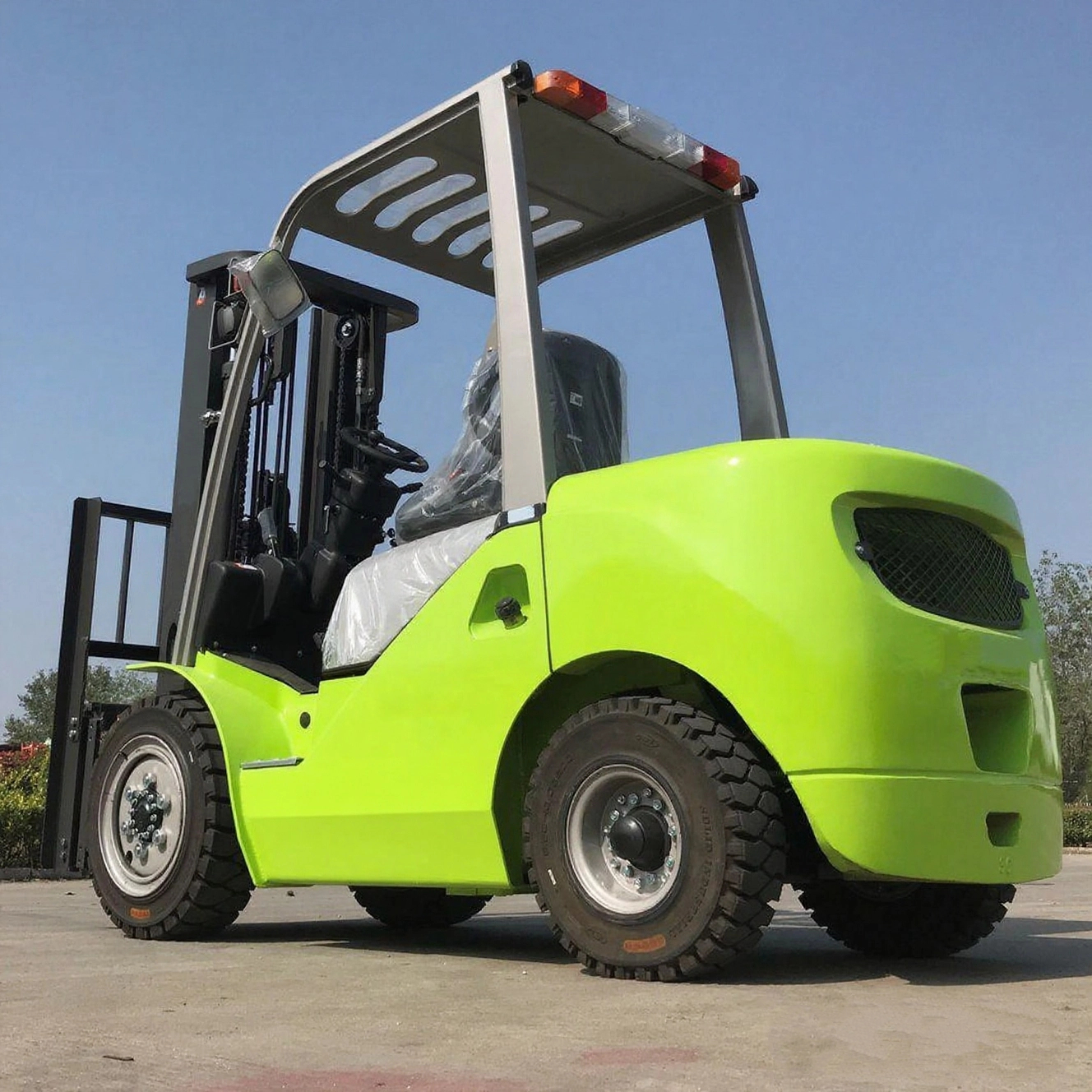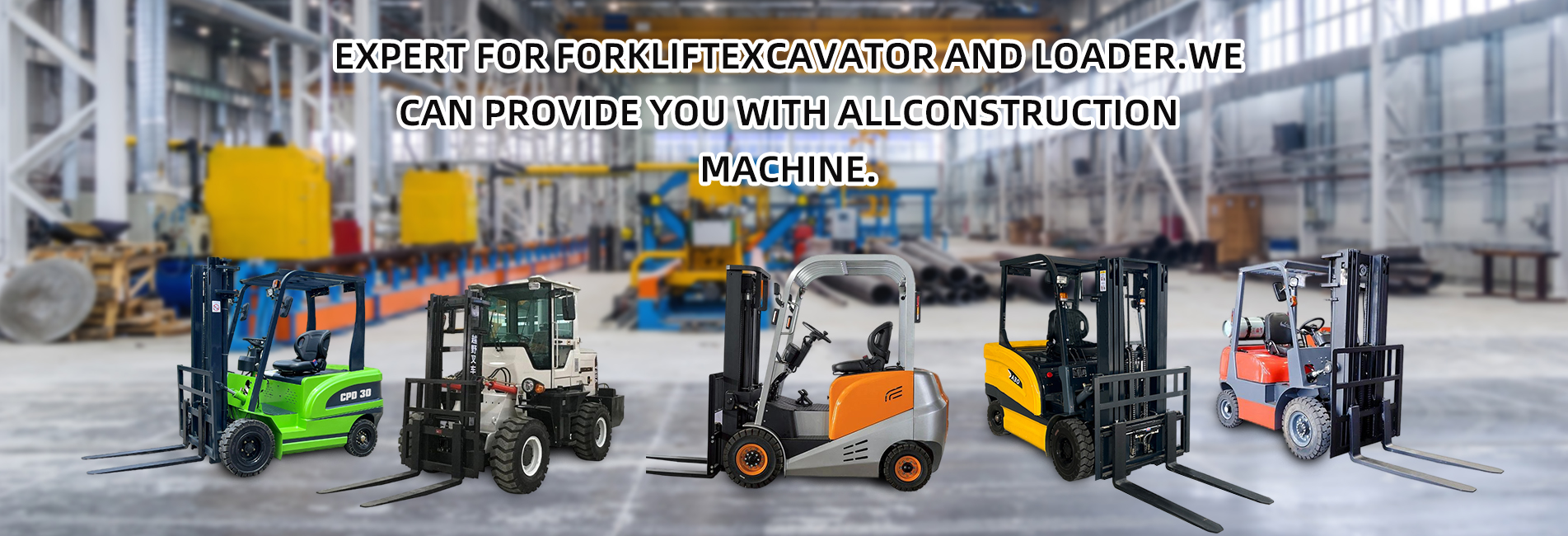Components of an Electric Forklift: A Detailed Introduction
An electric forklift is mainly composed of five core parts: the power system, body structure, working device, electrical system, and control system (with braking and steering systems as key subsets of control). Below is a detailed breakdown:

1. Power System
The power system provides the energy required for the forklift’s operation and movement.- Battery: Serves as the energy source of the electric forklift. Common types include lead-acid batteries and lithium-ion batteries. Lead-acid batteries feature low cost and mature technology; lithium-ion batteries, by contrast, offer advantages such as high energy density, long service life, and short charging time.
- Motor: Converts electrical energy into mechanical energy to drive the forklift’s movement and cargo lifting/lowering. The two main types are DC motors and AC motors. DC motors deliver high starting torque and excellent speed regulation performance; AC motors have a simple structure and are easy to maintain.
- Transmission: Adjusts the motor’s rotational speed and torque to meet the forklift’s driving and operating needs under different working conditions, allowing the forklift to adjust speed and power based on actual scenarios.
2. Body Structure
The body structure forms the basic framework of the forklift, supporting all components and ensuring operational stability.- Frame: Typically made of high-strength steel, the frame is the foundational structure of the forklift. It bears the weight of the forklift’s components and cargo, while also withstanding various impacts during driving. It must have sufficient strength and stability.
- Operator Cab: The space where the operator controls the forklift, equipped with facilities such as a seat and a control console. The console is fitted with control levers, buttons, and an instrument panel—used to control the forklift’s various movements and display key information (e.g., battery level, speed).
- Front/Rear Axles & Suspension System: The front axle mainly supports the forklift’s front weight and enables steering via the steering system; the rear axle primarily bears the forklift’s rear weight and houses the drive wheels. The suspension system acts as a buffer and shock absorber, enhancing the smoothness and comfort of the forklift’s movement.
3. Working Device
The working device is responsible for loading, unloading, and stacking cargo.- Fork Arms: Key components for handling cargo. Usually consisting of two telescopic arms, they can move up and down to adapt to different cargo stacking heights. The ends may also be equipped with cargo clamps to secure loads for safe handling.
- Mast: Installed above the fork arms, the mast supports the lifting and tilting movements of the forks. Common types include single-stage masts and multi-stage masts; multi-stage masts can achieve higher lifting heights in limited spaces.
- Hydraulic System: Composed of a hydraulic pump, hydraulic cylinders, hydraulic valves, an oil tank, and oil pipes. The hydraulic pump converts electrical energy into hydraulic energy to power the forklift’s lifting, lowering, and tilting actions; hydraulic cylinders are the executive components that enable fork lifting and mast tilting; hydraulic valves control the direction and flow of hydraulic oil according to the operator’s instructions, thereby precisely regulating the movements of the forklift’s working device.
4. Electrical System
The electrical system coordinates the operation of all electrical components and ensures safe power transmission.- Controller: Acts as the "brain" of the electric forklift’s electrical system. It receives the operator’s instructions, precisely controls the motor’s working status, and real-time monitors parameters such as the motor’s current, voltage, and temperature to ensure the forklift operates safely and stably.
- Lighting & Signaling System: The lighting system includes headlights, turn signals, and taillights—used to provide illumination in low-light or nighttime environments, ensuring safe operation. The signaling system includes a horn, turn indicators, and stop lights—used to send warning signals to nearby personnel and prevent collisions.
- Cables: Connect electrical components such as the battery, motor, and controller, transmitting electrical energy to required parts. They are usually made of high-strength, wear-resistant materials to ensure reliability and long service life.
5. Braking System
The braking system ensures the forklift can slow down or stop safely.- Service Brake: Generally uses hydraulic or electromagnetic braking. By pressing the brake pedal, the braking device acts on the wheels to reduce the forklift’s speed or bring it to a stop, ensuring timely braking during movement.
- Parking Brake: Mainly used to secure the forklift’s position when parked and prevent slipping. It is usually a mechanical handbrake or electromagnetic handbrake. After the forklift is parked, the handbrake is pulled or the corresponding device is activated to keep the wheels in a braked state.
6. Steering System
The steering system enables the forklift to turn flexibly, especially in narrow spaces.- Steering Gear: Typically hydraulic or electric. The operator manipulates the steering wheel or control lever to trigger corresponding movements of the steering gear, controlling the forklift’s turning direction.
- Steering Gear & Tie Rods: The output force of the steering gear is transmitted to the wheels via the steering gear and tie rods, allowing the wheels to turn according to the operator’s instructions—enabling the forklift to steer flexibly in tight spaces.
7. Safety System
The safety system prevents accidents and reduces risks during operation.- Emergency Stop Button: In case of sudden emergencies, the operator can press the emergency stop button to quickly cut off the forklift’s power supply, stopping the forklift immediately to avoid the occurrence or escalation of accidents.
- Limit Switches: Installed at the extreme positions of fork lifting and mast tilting. When the forks or mast reach these limits, the limit switches are automatically triggered to stop further movement, preventing hazards such as overloading or over-travel.
- Seat Belt: The operator must fasten the seat belt during operation. It secures the operator to the seat in the event of unexpected shaking or collisions, reducing injury risks.



